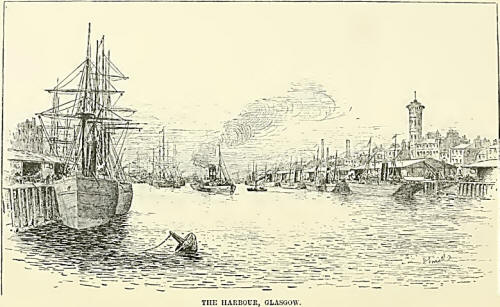
Its Development as a Navigable River,
The Rise and Progress of Marine Engineering and Shipbuilding on its
banks, and the Leading Historical, Geological, and Meteorlogical
features of the Clyde Valley.
PREFACE
In the present volume I have endeavoured to give an
outline of the principal features of the River Clyde, and of the
commercial and industrial operations which have rendered it so well
known as a navigable river.
Various books have appeared from time to time
treating specifically of the leading characteristics of the
district, and of the rise and progress of its industries.
The object of this work is rather to convey, in a
condensed form, a general idea of the River, and of its varied
surroundings—both of a topographical and a commercial
character—together with some of the geological and meteorological
features of the Clyde Valley.
For much of what is contained in the volume I am
indebted to already published works, and to various individuals and
business firms, who readily responded to inquiries on special points
of a commercial, mechanical, or scientific nature; also to many
personal friends, who have kindly communicated valuable information,
especially about old Glasgow, the river, and early steamboats.
Throughout the text I have endeavoured to acknowledge
the sources of all the quotations or special information obtained,
and of the drawings and photographs lent for the purpose of
illustration. The picturesque scenes have been drawn by D. Small and
John Blair.
W. J. MILLAR.
Glasgow, Mai/, 1888.
CONTENTS
Chapter I. Descriptive
Chapter II. Topographical and Tributaries, &c.
Chapter III. Geological
Chapter IV. Historical
Chapter V. The City of Glasgow
Old Glasgow
Conveyances
Postal Services
Buildings
Institutions
Bridges
Parks
Water Supply
Charities, &c.
Population and Area
Chapter VI. The River
Steam Navigation
River Traffic
Steam Shipping
Progress of Shipping
Chapter VII. Commercial and Industrial, Mining and Metallurgy, &c.
Chapter VIII. Meteorological, &c.
Chapter IX. Defences
Chapter X. Yachting
Chapter XI. Lighthouses |

